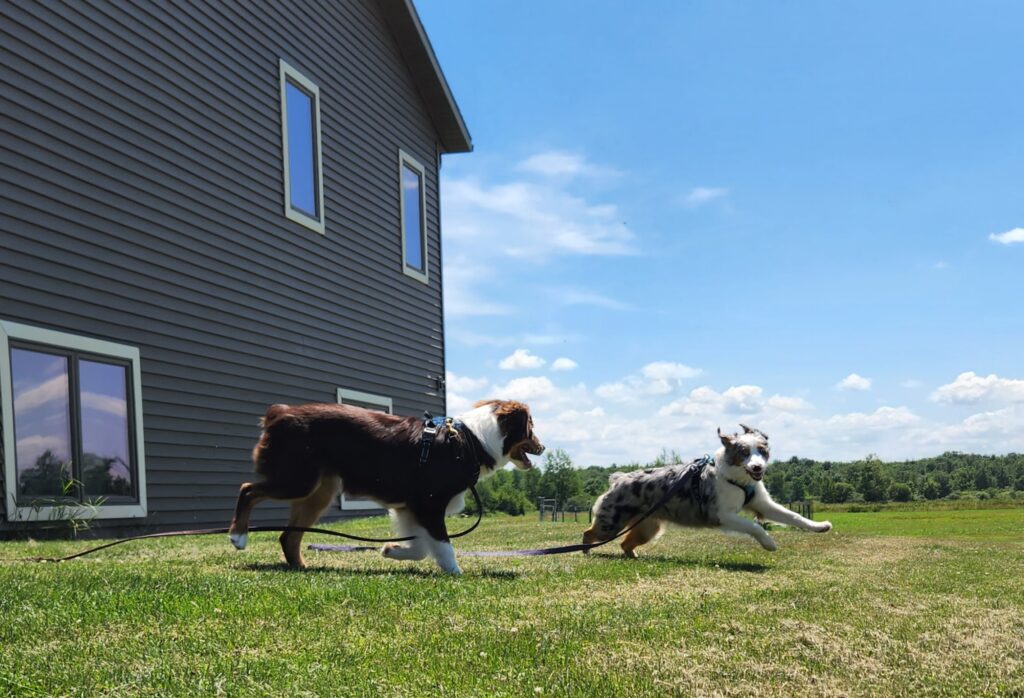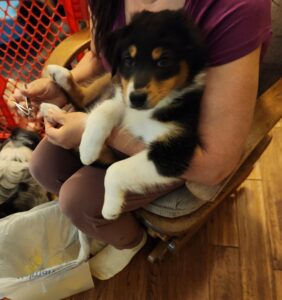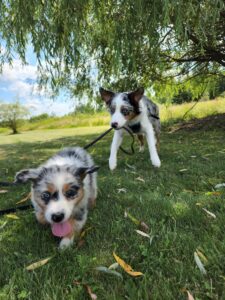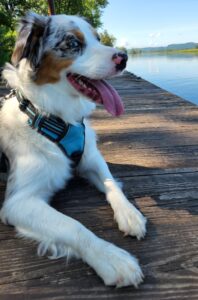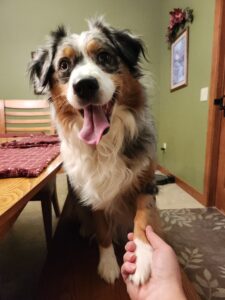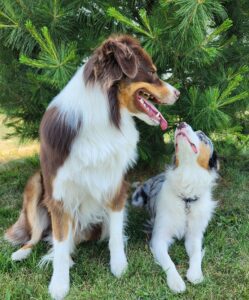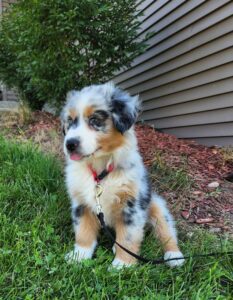The three Ds—duration, distance, and distraction—are critical factors in dog training and affect nearly every behavior. Dogs don’t generalize well, meaning that if they learn to sit in front of you, they may not automatically understand that “sit” means the same thing when you’re across the room. As each “D” increases, it becomes more difficult for your dog to perform a behavior successfully. If all three factors come into play without proper individual training, the chance of success is narrowed.
Distance
Distance refers to the space between the trainer and the puppy. To increase distance, build on success in small increments. Start with one step back, then progressing to two steps, and so on. If a puppy doesn’t hold their position, return to the point where they were successful. Always end the training session on a successful note to ensure a positive experience for the puppy If progress stalls, check which other D might be affecting their ability to succeed. The farther away you get, the less reliable your puppy may become. Save leaving the room for last, as puppies know when you’re out of sight, which is particularly challenging.
Duration
Duration is the length of time your dog maintains a behavior. Some behaviors don’t have a duration factor, such as “rolling over” or “giving a high five”. But for behaviors that require holding a position, like “down” or “sit” or “stay,” the longer they have to hold it, the harder it becomes. Start with a very short duration, like one second, and build incrementally. If your dog gets it wrong, return to a shorter interval and start building again. Be mindful of when you give rewards. For example, treat your dog while they’re in the position you want to reinforce rather than waiting until they’ve moved. Treat throughout the duration; if training to sit for 60 seconds, give a small treat at 15-second intervals, as well as at the end. Gradually add duration, ensuring success at each step.
Distraction
Distraction involves any stimuli in your puppies environment, from an animal running across the yard to the sound of a knock on your door. Anything exciting or disruptive to your puppy is a distraction. Make sure your puppy can handle duration and distance before adding distractions. Train new behaviors in familiar, quiet environments where you’re the most interesting thing in the room. Start with small distractions and build slowly. For example, teach your puppy to wait at doorways in a quiet room before moving to the back door, then the front door, then outside. As difficulty increases, consider raising the value of your puppies rewards. Such as, use kibble for easier or mastered commands and string cheese or hot dogs for more difficult training. Create a hierarchy of treats, ranging from what your puppy finds least tempting to most tempting. The “leave it” command is helpful for communicating that they can’t have the thing they want right now.
Combining the Three Ds
Start by gradually adding one D into your training at a time. If your dog can’t be successful, make the training easier, ensuring they succeed. Always lower the other Ds when adding or increasing the one you’re focusing on. When working on distance, reduce duration and keep distractions minimal. Only combine the Ds once your dog has mastered each one individually. When you notice your dog struggling to perform a behavior, check the three Ds. Chances are, something is too tricky for them to handle. Incorporate duration, distance, and distraction into your training to ensure your dog understands what you’re asking, no matter the situation.
Conclusion
Mastering the three Ds of dog training—duration, distance, and distraction—is key to developing a well-behaved and responsive dog. By gradually increasing the difficulty and ensuring your puppy succeeds at each step, you can build a strong foundation for reliable behavior. This comprehensive approach will help you create a confident, well-trained dog that can handle various situations and environments, ensuring a more enjoyable and stress-free experience for both you and your companion.

